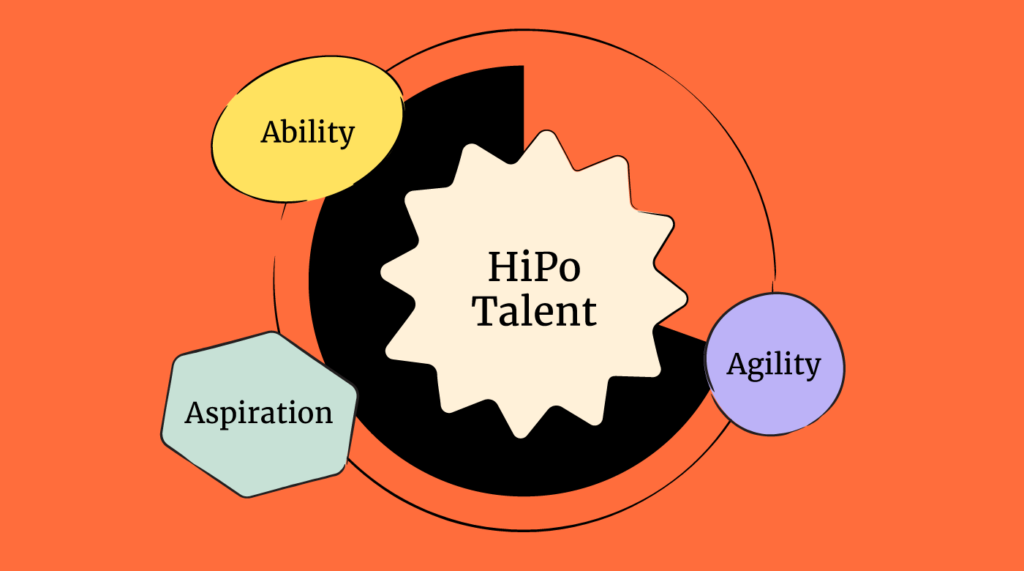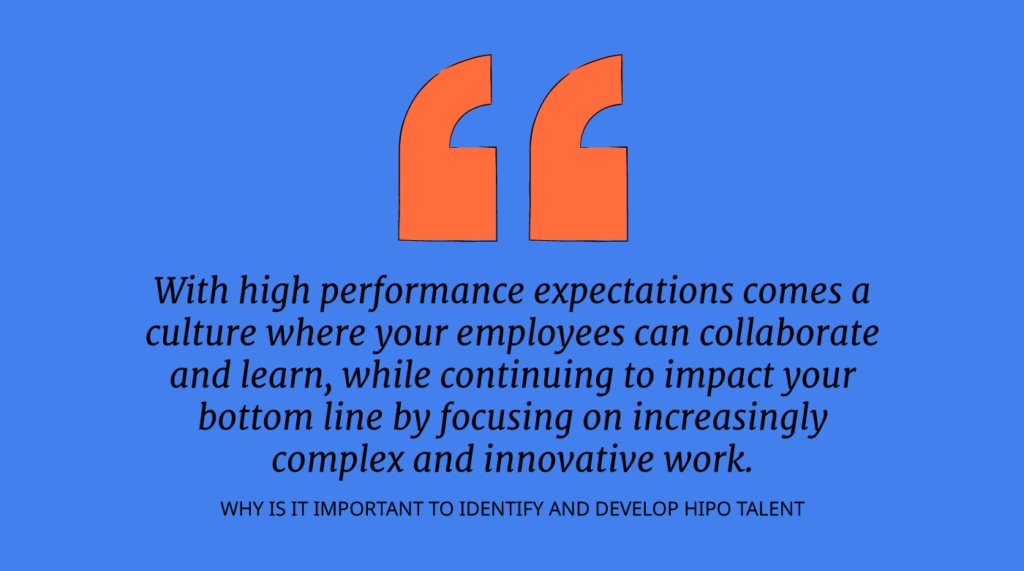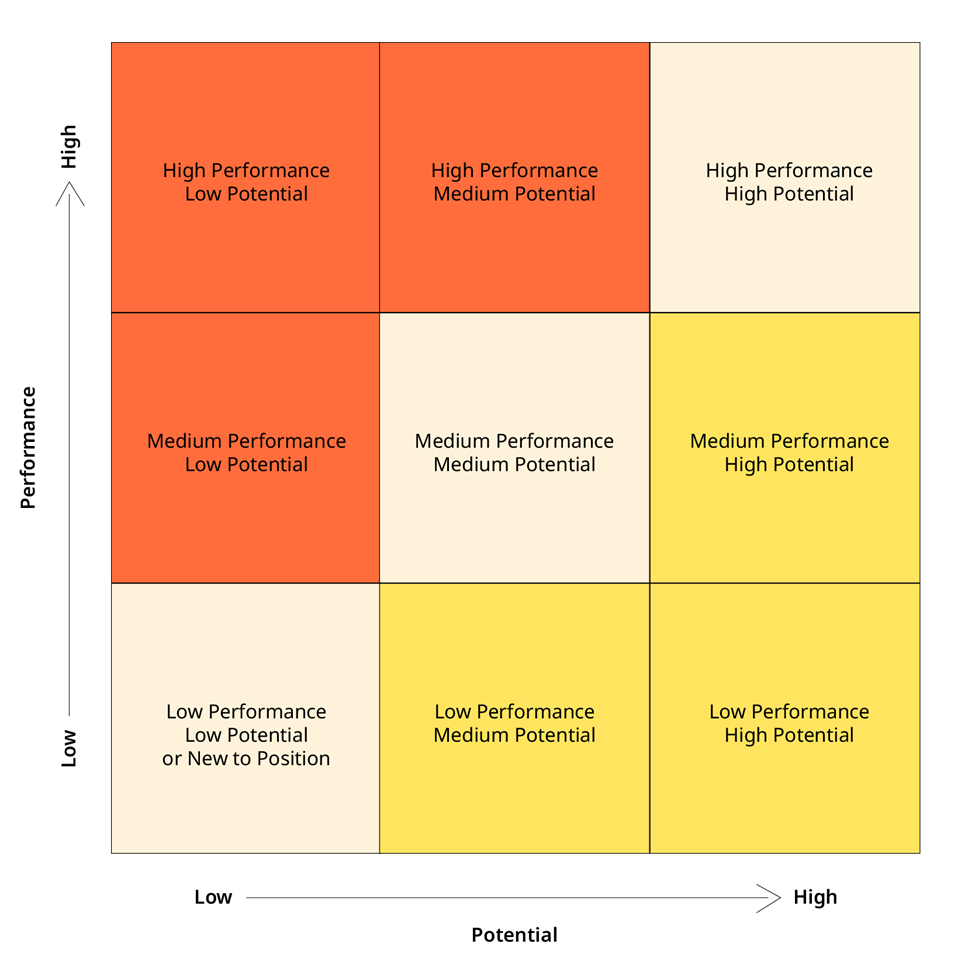As people leaders, we often think the world of our teams, and rightfully so. After all, we get to hand-pick our talent and select the highest-performing individuals to join our teams.
These are colleagues we become personally invested in, helping them grow and develop and empowering them to deliver the best possible work.
It’s natural for us to think of all of our people as being high potential, but are they really? According to the Talent Management Institute, “Most companies report that the top 3-5% of their staff are HiPos.” Further, this small, elite class of colleagues is estimated to provide 91 percent more value to your organization than their non-HiPo counterparts!
This shows that 1) the bar for what constitutes high potential may be set higher than we sometimes realize, and 2) as leaders, it's incumbent upon us to do everything within our power to identify, develop and retain our high-potential talent.
In this article I’ll take you through:
- What is high-potential talent?
- How to identify high-potential talent
- How to develop high-potential talent
What is high-potential talent?
In the simplest sense, HiPo talent means individuals that consistently provide significantly higher value/output than their role requires, and have the capability and desire to do more. These are individuals with a track record of driving results today and ascending to higher levels of the organization to tackle the business challenges of tomorrow.
While you can and should align on what it means to be a high-potential future leader at your organization, there’s been extensive research that you can lean on identify the traits of high potential employees.
One of my favorites is the A3 Model, popularized by Aon Human Capital Solutions. This model focuses on three essential traits of high potentials: ability, agility and aspiration.
Per Aon,
“Ability holds up a lens to an employee’s skill sets along with cognitive and emotional abilities.
Agility analyses an individual’s adaptability and change readiness/flexibility—a critical factor in today’s rapidly evolving business environment powered by technology.
Aspiration, perhaps the most overlooked factor, assesses an individual’s drive and desire to take on increasingly high profile/ responsibility roles.”

This simple, yet highly effective, model helps organizations build a common language around what it means to be high potential.
It’s also essential to remember that our high-potential talent meets all criteria of this model, not just one or two aspects. The unique combination of Ability, Agility and Aspiration is what sets apart that elite 3-5% of your employees from the rest.
Why is it important to identify and develop HiPo talent?

Identifying high-potential talent is a critical part of your overall talent strategy. As leaders of people, it's a key responsibility to ensure that our talent strategies are directly aligned to what we need to accomplish as a business.
Identifying HiPo talent allows us to aggressively develop the next wave of talent who will be required to execute on our business priorities. This is especially critical in the talent market organizations are currently facing. The battle for external talent is nothing short of ruthless!
Your ability to grow talent in-house vs shopping externally can boost colleague retention, employee engagement, accelerate outcomes, and save costs, all while ensuring you have both quantity and quality of talent needed for the current and future needs of your business.
Beyond this, high-potential talent is contagious. HiPos set the bar for the organization. With high potential performance expectations comes a culture where your employees can collaborate and learn, while continuing to impact your bottom line by focusing on increasingly complex and innovative work.
How to identify high potential talent
There’s a multitude of approaches that can be taken to identify HiPo talent. Let’s explore a couple of popular approaches as well as some pitfalls to avoid as you build out your high-potential strategy.
Organizational Talent Review
One of the most prevalent and approachable ways to identify high-potential talent is through a formal organizational talent review process. This process is usually managed in partnership between your Human Resources/Talent Development team and your business leaders.
Many organizations conduct their organizational talent review on an annual basis. You’ll need to figure out what works best for your company, but my recommendation would be to conduct regular talent conversations—minimally quarterly—to supplement your annual process.
A well-designed talent review process will help your organization answer a couple of key questions:
- What are the talent needs of your organization: what critical work do we need to accomplish? Do our employees have the requisite competencies and skills for this work? What gaps do we have that you’ll need to either ‘buy’ talent to fill or upskill colleagues on?
- Who are our high-performing employees? Who has the leadership potential to do more within our organization? How soon will they be ready to take on new opportunities?
- For critical roles—including all leadership positions—who can succeed the current incumbent and take their role if the current leader vacated the position? How soon would they be ready to jump into that role?
- For critical talent, what level of risk do we have that they’ll leave the organization?
- Lastly, do we have the right talent in our roles? If not, how can we reposition high-potential individuals to provide the most value to our organization?
There are many approaches you can take to formulate your talent review process, however, one of the most prominent tools organizations use is the 9 - Box.
This allows HR and leadership to rate colleagues based on their performance and potential. High-performing, high-potential individuals become the critical talent that we include in our succession planning efforts to develop, mentor and sponsor.

Critical skill assessments
Another common way of assessing high-potential talent is via critical skills assessments. These assessments are designed to allow your organization to understand what skills you have today, what skills you need to be successful in the future, and what gaps you have from a talent perspective.
Getting a deeper understanding of your overall talent pool helps you to identify your high-potential leadership talent who have the skills needed to bring your organization into the future.
There are many mechanisms you can leverage to conduct an assessment.
- A simple approach is to use a survey tool to collect employee and manager assessments of where your employees’ subject matter expertise lies against your company’s critical future skills needs (or competencies).
- Tools like talent marketplaces offer the ability for employees to assess their personal strengths and identify their development opportunities.
- If you don’t have the capacity to do the work in-house, consulting services like Deloitte offer workforce assessment approaches that help you assess your talent and gain insights to guide the direction of your business strategy.
Ideally, critical skills assessments are completed iteratively over time. Your employees’ competencies and skills are never static and continued assessment helps ensure you have an accurate depreciation of your current talent pool.
Avoid common pitfalls
Identifying HiPo talent is potentially one of the most difficult, but likewise one of the most important tasks faced by leaders of people.
As leaders, we naturally become both highly invested and highly protective of the people we have the privilege of leading. But identifying high-potential talent requires us to put aside our biases and objectively look at our talent with a critical eye.
One of the best ways to ensure you are truly identifying your HiPo talent is to reflect on the common pitfalls leaders face when identifying potential.
Lacking a clear definition of high potential
It’s very hard to make headway in the HiPo space if you don’t have an agreed upon, and properly communicated, definition of what it means to be high potential at your organization.
Beyond this, it’s hard for colleagues to move internally if they don’t understand what leadership is looking for regarding promotability and potential.
Ensuring that all colleagues and leaders understand how you define potential can unlock talent mobility and ensure your top talent is developing in the right way to become ready now for their next opportunity.
Whether it’s the A3 model, or a different model your company prefers, it’s essential that you provide your employees and leaders with transparency into what your organization values and expects of future leaders. thoroughly communicated definition
Confusing high performance with high potential
The connection between performance and potential is worth double clicking into. While there is a positive correlation between being high potential and also being a high performer, the inverse is not true: being a high performer does not correlate to automatically being high potential.
One of the most common downfalls that leaders face in identifying potential is to mistakenly assume that performance in a current role equates to the potential to do more and succeed in more senior management roles.
This is where it becomes so important to make sure that your colleagues exhibit all components of what it means to be HiPo (ability, agility, aspiration, etc.).
Overlooking Aspirations
Often as leaders we see the potential in others. However, that potential cannot be realized if it’s not matched to the individual's aspirations.
A simple example of this is managerial positions. Regardless of someone’s potential, some employees just aren’t interested in moving into a people leadership role.
I often see this in technology spaces when leaders push their top technologist into a leadership position. Being a high-performing technologist is never going to equate to being a great leader if that's not the aspiration of the employee.
So how do you know what someone’s aspirations are? Keep it simple—ask them. And once you know, you can use the tools below to help develop them to realize their aspirations.
How to develop high potential talent
Individual Development Plans (IDPs)
Individual Development Plans, usually referred to as IDP, are documents created collaboratively between a team member and their manager that provide a roadmap to achieving the team member’s short and long-term career goals.
IDPs are tools for enabling your high potentials to collaborate with their leader to formalize an approach to rapidly developing their knowledge, skills, and abilities.
Ideally, all identified HiPos at your organization should have an action IDP to help them work on their opportunity areas and bring their strengths to new highs.
Mentoring
Social learning like mentoring, coaching, and networking plays an important role in the development of high-potential employees.
Mentorship, in particular, can help ensure that your best and brightest future talent is actively being groomed by more senior leaders.
This helps ensure that your leaders are imparting crucial knowledge, skills, feedback, and advice to the next wave of talent.
Stretch Assignments
As adult learners, experiential learning is essential to how we grow and develop. Stretch assignments, job shadowing and other experience-based learnings are essential to the development of your HiPos, plus why wouldn’t you want to put your best and your brightest people into places where they can shine?
Stretch assignments give your high potentials the benefit of growing and developing themselves while simultaneously contributing to your organization's success.
High potential leadership development programs
Lastly, HiPo “emerging leader” or “leadership development” type programs can be highly beneficial if you have the infrastructure to support these types of programs.
Cohort-based programs give your HiPos the ability to learn together and create a network of other future leaders across your organization.
When done right, these types of experiences can rapidly create a leadership pipeline, while simultaneously driving the engagement and retention of your top talent.
Related read: 10 Best Leadership Development Programs to Grow Future Leaders
Final Thoughts
One final consideration is how transparent you should be with your high potential colleagues about how you view them.
While there‘re arguments both ways, my preference is to be as transparent as possible. Letting employees know that you see them as critical talent is a great way to help them understand that they’re appreciated and that you see them being highly successful now and into the future.
This can help drive retention, so long as you continue to act on your promises and provide them with visibility into their career path and new role opportunities.
Lastly, publicly recognizing your HiPos also helps others see what the standard is for talent at your organization.
This helps raise the bar and build a company culture where all employees know what it takes to ascend to higher levels and are empowered to develop themselves to get there.
For more on how to develop high-potential talent and build happy, productive organizations, subscribe to the People Managing People Newsletter.
Some further reading:
- What Is Succession Planning? How To Develop Your Next Great Leaders
- How To Create A Learning And Development Strategy In 7 Steps
- How To Perform A Talent Review In 5 Steps
- Skills Gap Analysis: How To Identify Key Skills To Meet Your Business Goals
- Beyond The High-Potentials: How To Disperse Your Talent Development Efforts More Effectively Across The Organization


